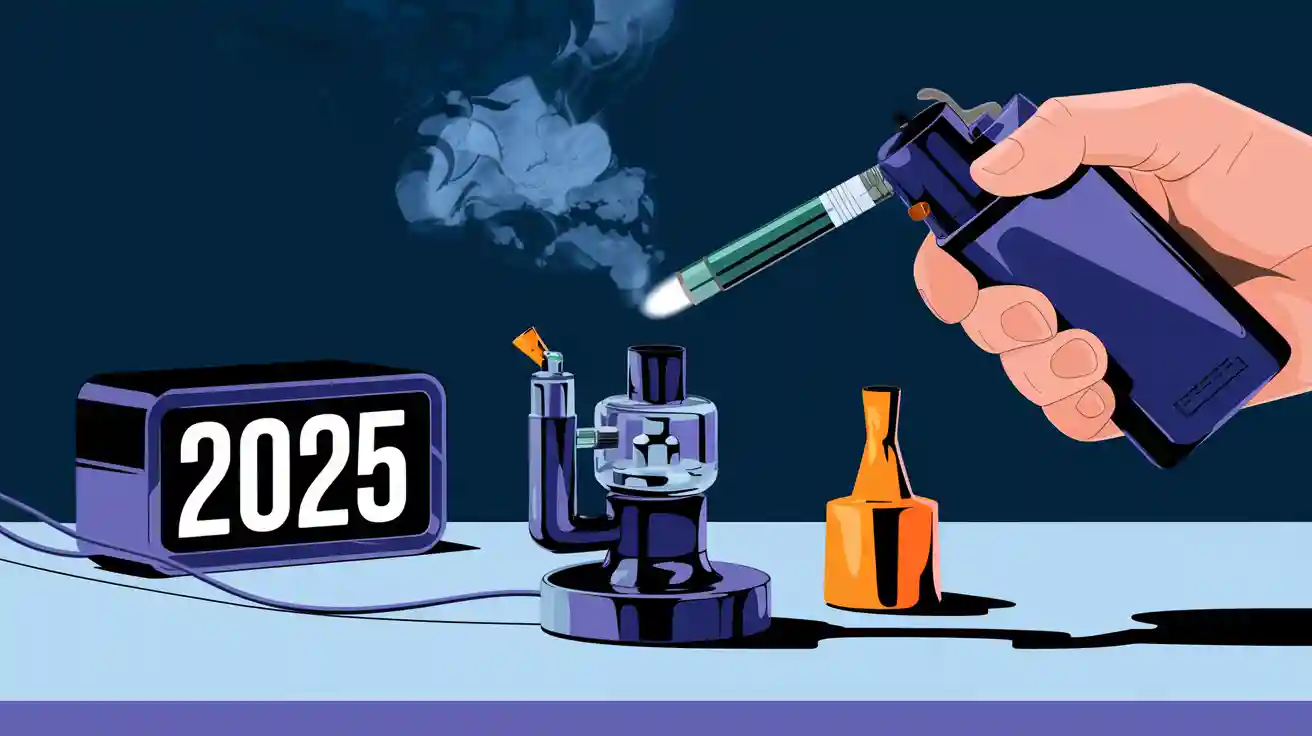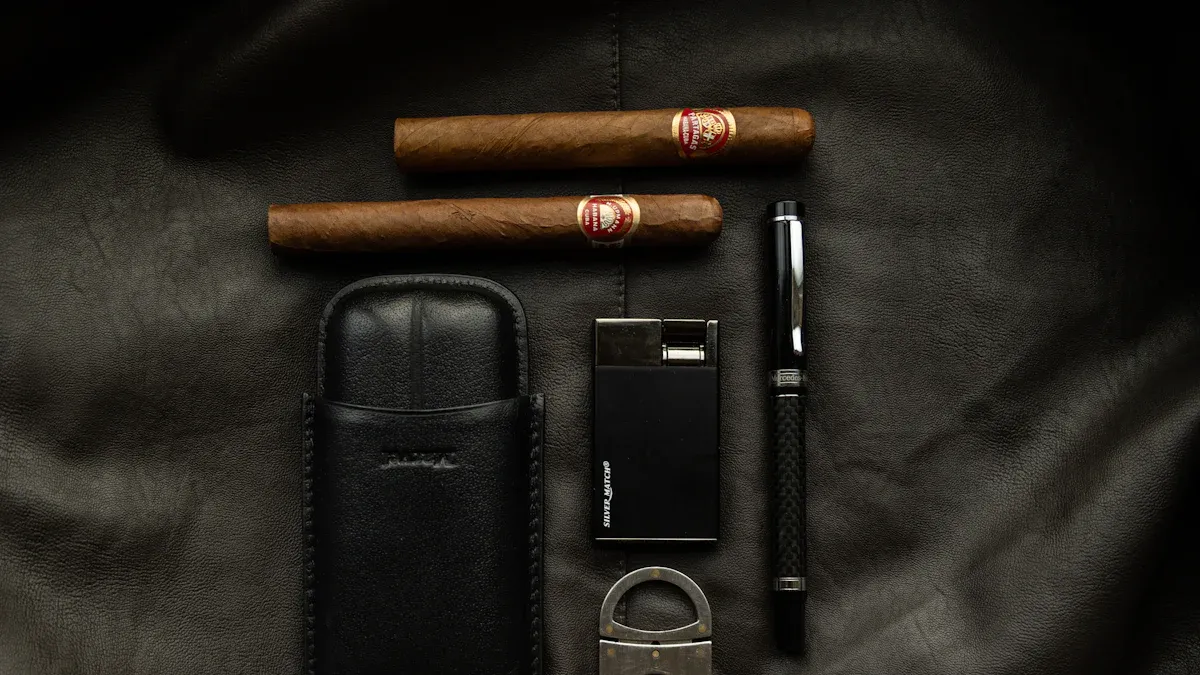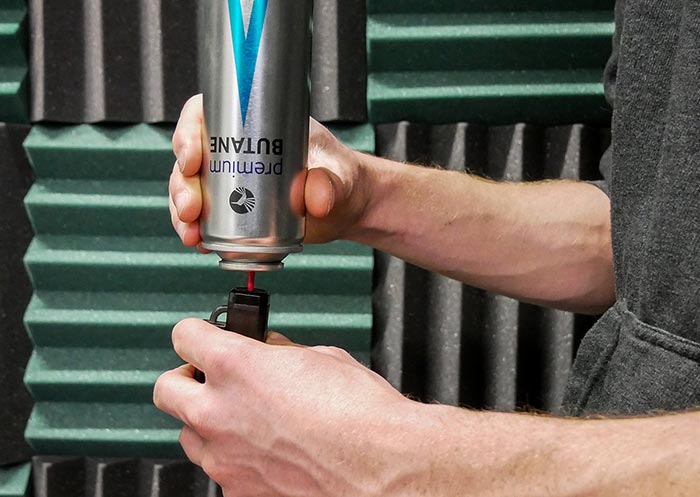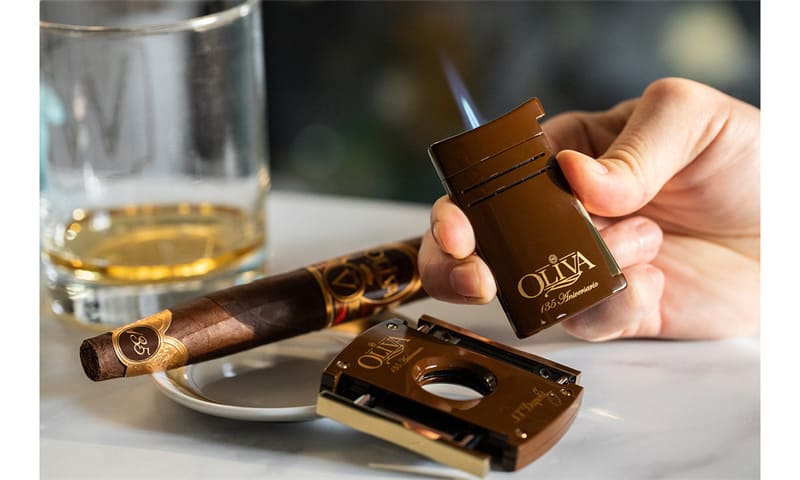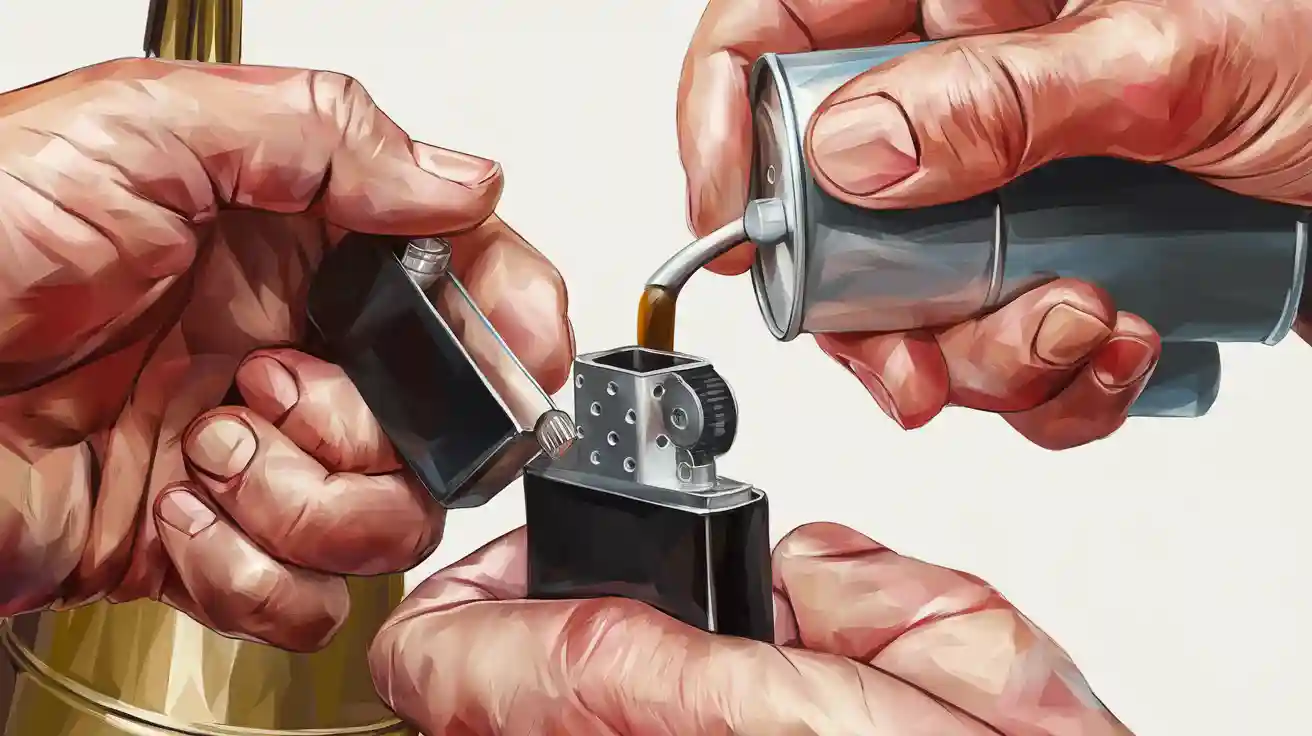Simple Steps to Repair Your Butane Lighter
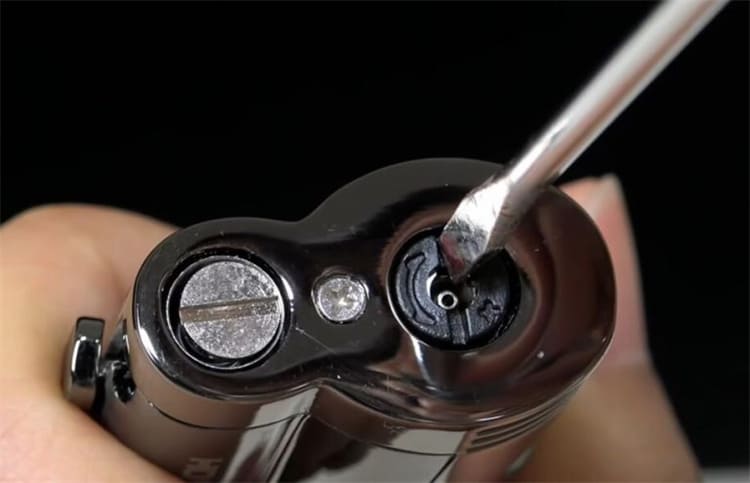
Ever had your butane lighter fail when you needed it most? It’s frustrating, isn’t it? Trust me, you’re not alone—this happens to everyone at some point. The good news? Fixing it is easier than you think. With the rise of durable, refillable designs and even smart lighters, manufacturers are making repairs more straightforward. Whether it’s a fuel issue or something blocking the nozzle, you don’t need to toss your lighter away. Let’s get it sparking again!
Why Your Butane Lighter Is Not Sparking
Ever tried to light your butane lighter, only to find it stubbornly refusing to spark? It’s annoying, right? Let me walk you through the most common reasons this happens—and how you can fix them.
Low or Empty Fuel
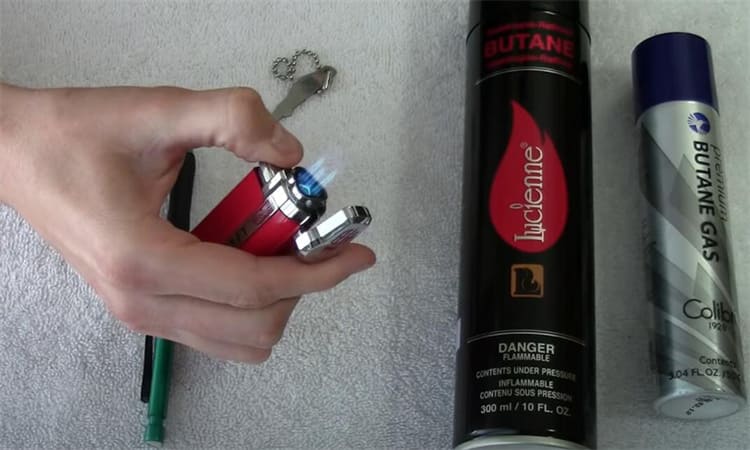
If your lighter isn’t sparking, the first thing to check is the fuel level. Butane lighters rely on pressurized gas to create a flame, so if the tank is empty or running low, it won’t work. I’ve made this mistake myself—thinking my lighter was broken when it just needed a refill.
Here’s a quick tip: Shake the lighter gently and listen for the sound of liquid inside. If you don’t hear anything, it’s time to refill. Sometimes, though, the problem isn’t just an empty tank. Incorrect refilling or using non-premium fuel can also cause issues. Always use high-quality butane and follow the refilling instructions carefully. (Matbe you want: How to Refill Your Djeep Torch Lighter)
Blocked Nozzle or Jets
A clogged nozzle or jet is another common culprit. Over time, dirt, debris, or even residue from low-quality fuel can block the flow of butane. When this happens, the gas can’t reach the igniter, and your lighter won’t spark.
I’ve found that cleaning the nozzle is surprisingly easy. Use a small brush or a toothpick to gently remove any buildup. If the blockage is stubborn, compressed air can help clear it out. Just be careful not to damage the nozzle while cleaning. Oh, and don’t forget—altitude can affect the flame adjustment, so if you’re in a high-altitude area, you might need to tweak the settings.
Worn-Out Flint or Ignition System
Sometimes, the issue lies in the ignition system itself. The flint or piezoelectric igniter can wear out over time, especially if you’ve been using the lighter frequently. Without a functioning ignition system, the lighter won’t produce a spark, no matter how much fuel it has.
Replacing the flint is straightforward. Most butane lighters have a compartment for the flint that you can access easily. Swap out the old flint for a new one, and you’re good to go. If your lighter uses a piezoelectric igniter, you might need to replace the entire ignition system. It sounds complicated, but trust me—it’s worth it to get your lighter working again.
Misaligned Igniter Components
Ever wondered why your lighter clicks but doesn’t spark? Misaligned igniter components might be the reason. This happens when the parts responsible for creating the spark—like the piezoelectric element or the wire—aren’t properly aligned. Without alignment, the spark won’t reach the butane, and you’re left with a stubborn lighter.

How Can You Fix It?
Here’s what I do when I suspect misalignment:
Inspect the Igniter Mechanism 🔍
Open the lighter carefully and take a close look at the igniter components. Check if the wire or piezoelectric element is bent or out of place. If something looks off, it’s likely the culprit.Realign the Components 🛠️
Use a small tool, like tweezers or a flathead screwdriver, to gently adjust the misaligned parts. Make sure the wire is close enough to the nozzle to create a spark. Don’t force anything—precision is key here.Test the Spark ✨
After realigning, press the ignition button to see if the spark is back. If it works, you’re good to go. If not, double-check the alignment or consider replacing the igniter system entirely.
Pro Tip: Always work in a well-lit area to see the tiny components clearly. If you’re unsure about the alignment, compare it to a working lighter for reference.
Common Mistakes to Avoid
Over-tightening screws: This can damage the igniter mechanism.
Using excessive force: Gentle adjustments work better than brute strength.
Skipping the test step: Always test after making changes to ensure the lighter is fixed.
Fixing misaligned igniter components might seem tricky at first, but trust me, it’s easier than it looks. Once you get the hang of it, you’ll feel like a lighter repair pro! 😊
How to Fix Your Butane Lighter
Check and Refill the Fuel
Is your butane lighter refusing to spark? Start by checking the fuel level. Butane lighters rely on pressurized gas to work, so an empty tank is often the culprit. Here’s how I do it:
Shake the lighter gently 🪶
Hold the lighter close to your ear and give it a light shake. If you don’t hear the sloshing sound of liquid, it’s time for a refill.Refill with high-quality butane 🛢️
Cheap fuel can clog the nozzle and jets over time. Always use premium butane for a smoother refill and better performance. To refill, hold the lighter upside down and press the butane canister nozzle firmly into the refill valve. Wait until you see a small spray of gas escape—this means the tank is full.
Quick Tip: After refilling, let the lighter sit for a few minutes before testing it. This allows the gas to stabilize and prevents sputtering.
Refilling the fuel is simple, but it’s also the most common fix for a non-sparking lighter. If this doesn’t solve the problem, move on to cleaning the nozzle and jets.
Clean the Nozzle and Jets
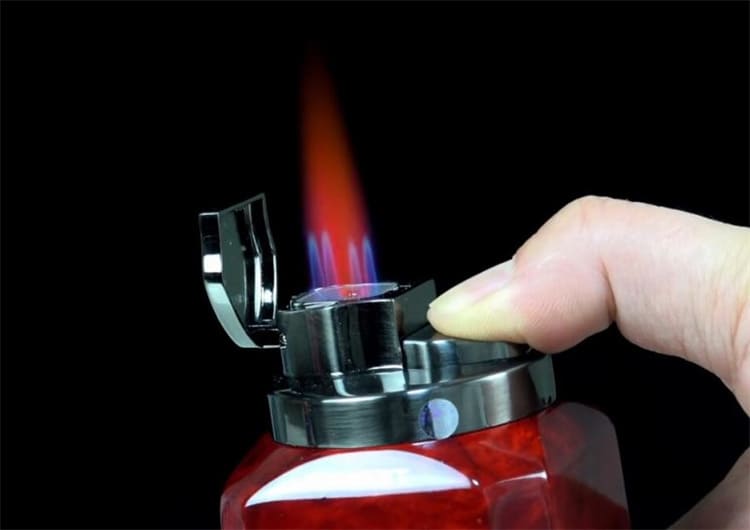
A clogged nozzle or jet can stop your lighter from working. Cleaning them can restore functionality. Over time, debris and residue build up, especially if you’ve used low-quality fuel. Here’s how I clean mine:
Inspect the nozzle 🔍
Look closely at the nozzle and jets. If you see dirt or residue, it’s time for a cleanup.Use a small brush or toothpick 🪥
Gently remove the debris with a soft brush or toothpick. Be careful not to damage the nozzle. For stubborn clogs, compressed air works wonders.Test the lighter 🔥
After cleaning, press the ignition button to see if the spark returns.
Personal Experience: I once had to send my XIKAR lighter to the factory for valve cleaning after two years of heavy use. Hundreds of cigars later, the air lines needed maintenance. Regular cleaning can save you from costly repairs.
Cleaning the nozzle and jets is quick and effective. If your lighter still doesn’t spark, the ignition system might need attention.
Replace the Flint or Ignition System
If your lighter’s ignition system is worn out, replacing it can bring it back to life. Frequent use can wear down the flint or piezoelectric igniter, leaving your lighter unable to spark. Here’s how I handle this:
Check the flint compartment 🧰
Most butane lighters have a small compartment for the flint. Open it up and see if the flint is worn down or missing.Replace the flint 🔄
Swap the old flint for a new one. It’s a simple fix that can make a huge difference.Replace the piezoelectric igniter ⚡
If your lighter uses a piezoelectric system, you may need to replace the entire igniter. This requires a bit more effort but is worth it to restore functionality.
Pro Tip: Keep spare flints handy. They’re inexpensive and can save you a trip to the store when your lighter stops working.
Replacing the ignition system might sound intimidating, but it’s easier than it looks. Once you’ve done it, your lighter will feel brand new.
Adjust the Igniter Mechanism
If your lighter still isn’t sparking, the igniter mechanism might need a little adjustment. Don’t worry—it’s not as complicated as it sounds. I’ve done this a few times, and with a bit of patience, you can too.
Here’s how I adjust the igniter mechanism step by step:
Inspect the igniter closely 🔍
Open the lighter and take a good look at the igniter components. Check if the wire or piezoelectric element is bent, loose, or out of place. If something looks off, that’s likely the issue.Realign the wire 🛠️
Use a small tool like tweezers or a flathead screwdriver to gently move the wire closer to the nozzle. The wire should be close enough to create a spark but not touching the nozzle. Precision is key here—don’t rush it.Secure loose parts 🔧
If you notice any screws or components are loose, tighten them carefully. A loose igniter can prevent the spark from reaching the butane.Test the alignment ✨
After making adjustments, press the ignition button to see if the spark is back. If it sparks but still doesn’t light, double-check the fuel level or nozzle.
Pro Tip: If you’re unsure about the alignment, compare it to a working lighter. It’s a quick way to spot what’s wrong.
Adjusting the igniter mechanism might take a few tries, but don’t get discouraged. Once you get it right, your lighter will feel like new again!
Test the Lighter After Repairs
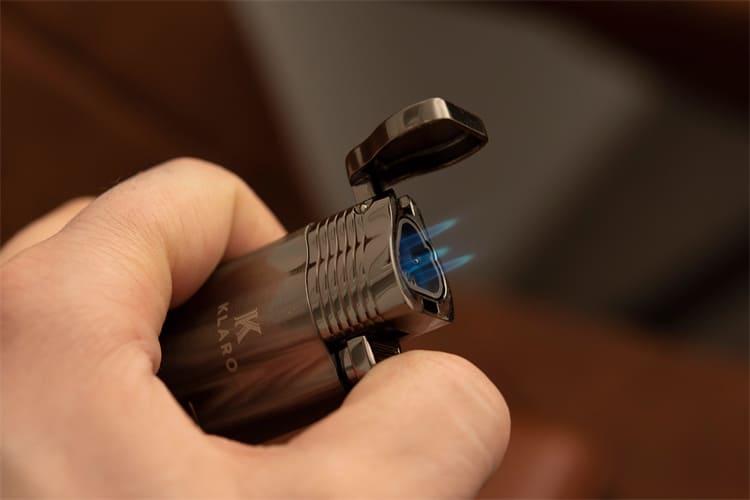
After making adjustments or repairs, always test your lighter to ensure it’s working properly. This step is crucial to confirm that everything is back in order.
Here’s how I test my lighter safely:
Move to a ventilated area 🌬️
Always test your lighter in a well-ventilated space. This prevents any buildup of butane fumes, which can be dangerous.Press the ignition button 🔥
Hold the lighter upright and press the button. Look for a strong, steady flame. If it sparks but doesn’t light, check the fuel level or nozzle again.Adjust the flame height 🔄
Use the flame adjustment wheel or screw to set the flame to your desired height. A medium flame works best for most tasks.Repeat if necessary 🔁
If the lighter still doesn’t work, revisit the previous steps. Sometimes, a small tweak can make all the difference.
Safety Note: Never test the lighter near flammable materials. Keep your hands and face at a safe distance from the flame.
Testing your lighter after repairs is the final step to ensure it’s ready to use. Once it’s sparking and lighting properly, you’re good to go!
Safety Tips for Repairing Butane Lighters

Work in a Ventilated Area
Always fix your butane lighter in a space with fresh air. Butane gas is very flammable and builds up fast in closed spaces. I’ve learned this myself—working in a small room can cause dangerous fumes without you noticing.
Here’s what I do:
Open windows or doors to let air flow. 🌬️
Work outside if you can. It’s safer and brighter.
Avoid small spaces like basements or garages without airflow.
Quick Reminder: Keep lighters away from kids and use child-safe models. This simple step helps prevent accidents.
Avoid Open Flames
Don’t repair your lighter near any open flames. It might seem obvious, but many people forget. Spilled butane or leaking gas can catch fire instantly, causing serious harm.
I read a report from Vancouver Fire and Rescue Services that stuck with me. Between January 2023 and April 2024, over 3,000 fires were caused by careless butane lighter use. Some of these happened during repairs near flames, leading to injuries and even deaths. It’s a strong reminder to stay cautious.
To stay safe:
Turn off stoves, candles, or heaters nearby. 🔥
Make sure there’s no heat source around before starting.
If unsure, wait until you’re in a flame-free area.
Pro Tip: Teach kids that lighters are for adults only. If they find one, they should tell an adult right away.
Handle Butane Refills Safely
Be extra careful when refilling your butane lighter. Butane is a pressurized gas, and mishandling it can cause leaks or accidents. I always follow these steps to stay safe:
Check for leaks before refilling. If you smell gas, stop immediately.
Turn the lighter upside down while refilling. This keeps air out of the tank.
Keep the refill canister away from heat. Even a small spark can ignite it.
Safety Note: Store butane cans in a cool, dry spot. Heat can make the gas expand and become dangerous.
By following these tips, you’ll stay safe and keep your lighter working longer. Always put safety first!
Use Proper Tools for Repairs

Using the right tools makes repairing your butane lighter easier and more effective. Trust me, I’ve learned this the hard way. When I tried fixing a lighter with random household items, I ended up making things worse. The right tools not only save time but also improve the chances of success.
Here’s what I recommend for lighter repairs:
Small brushes 🪥: These are perfect for cleaning the flint wheel and nozzle. A clean flint wheel generates better sparks, and a clean nozzle ensures smooth gas flow.
Tweezers ✂️: Use these to adjust misaligned igniter components. They’re precise and help you avoid damaging delicate parts.
Dremel tool 🛠️: This is a lifesaver for stubborn issues, like accessing the flint compartment or polishing worn-out parts.
High-quality flints 🔄: Brands like Ronson or Zippo work wonders. They last longer and produce consistent sparks.
Premium butane fuel 🛢️: Cleaner fuels like Whip-it or Vector prevent clogs and residue buildup, making repairs smoother.
Quick Tip: Keep these tools in a small kit. It’s handy and saves you from scrambling for supplies when your lighter acts up.
Why does this matter? Using proper tools improves repair outcomes. For example, cleaning the flint wheel with a brush boosts spark generation. High-quality flints and butane fuel enhance performance and longevity. These small changes make a big difference.
So, next time your lighter stops working, grab the right tools. You’ll fix it faster and keep it running longer. 😊
Maintaining Your Butane Lighter
Clean the Nozzle Regularly
Keeping the nozzle clean is key to a well-functioning lighter. Over time, dirt and residue can build up, especially if you use low-quality fuel. This clogs the nozzle and affects the flame. I’ve learned that a quick cleaning routine can save you from bigger problems later.
Here’s what I do:
Use a soft brush or a toothpick to gently remove debris. 🪥
For stubborn clogs, compressed air works wonders.
Avoid using sharp objects that might damage the nozzle.
I clean mine every couple of weeks, depending on how often I use it. A clean nozzle ensures smooth gas flow and a reliable flame every time.
Store the Lighter Properly
Proper storage can extend the life of your butane lighter. I’ve noticed that where you keep it makes a huge difference. Extreme temperatures or direct sunlight can damage the lighter and even cause leaks.
Here’s how I store mine:
Keep it in a cool, dry place. 🌬️
Avoid leaving it in cars or near windows where sunlight can hit it.
Store it upright to prevent gas from leaking.
These small steps help maintain the lighter’s functionality and longevity. Plus, it’s safer for everyone in the house.
Refill Before Running Out of Fuel
Don’t wait until your lighter is completely empty to refill it. Running out of fuel can cause air to enter the tank, which might lead to sputtering or uneven flames. I always refill mine when the fuel level gets low but before it’s empty.
Here’s my quick refill routine:
Shake the lighter gently to check the fuel level.
Refill it with high-quality butane when it’s running low. 🛢️
Let it sit for a few minutes after refilling to stabilize the gas.
This habit keeps my lighter working smoothly and prevents unnecessary wear on the ignition system.
Inspect the Ignition System Periodically

Regularly inspecting your lighter’s ignition system is one of the best ways to keep it working smoothly. I’ve learned that small issues, like a worn-out flint or a clogged gas port, can quickly turn into bigger problems if ignored. A quick check every now and then can save you a lot of frustration later.
Here’s why it’s important:
🛠️ Safety first: Inspections help catch potential issues before they become dangerous.
🔧 Longer lifespan: Checking parts like the catalytic element or piezoelectric mechanism can prevent malfunctions and extend your lighter’s life.
🔍 Better performance: A clean and well-maintained ignition system ensures your lighter sparks every time you need it.
How do I inspect my lighter? It’s easier than you think! Here’s my simple routine:
Check the flint: Open the flint compartment and see if it’s worn down. Replace it if needed.
Inspect the gas ports: Look for dirt or residue blocking the flow of butane. Use a soft brush or compressed air to clean them.
Examine the O-rings: These tiny seals keep the gas from leaking. If they look cracked or damaged, replace them.
Test the spark: Press the ignition button to see if the spark is strong and consistent.
Quick Tip: Set a reminder to inspect your lighter once a month. It only takes a few minutes, but it makes a big difference!
By keeping up with these checks, you’ll avoid unexpected malfunctions and keep your lighter in top shape. Trust me, it’s worth the effort! 😊
Fixing a butane lighter is easier than it seems. First, check the fuel level, clean the nozzle, and look at the ignition system. Fix any parts that are out of place, then test the lighter. These simple steps often fix most problems.
Safety is very important when repairing lighters. Always work in a space with fresh air, stay away from flames, and be careful when refilling butane. Using the right tools makes repairs faster and easier.
Taking care of your lighter helps it last longer. Clean the nozzle regularly, refill before it’s empty, and check the ignition system often. These small habits save time and stop bigger issues later.
Tip: Think of your lighter as a tool you rely on. A little care makes a big difference! 😊
Related:
FAQ
What should I do if my lighter still doesn’t work after repairs?
Double-check your steps.
Go back through the repair process to ensure nothing was missed. Look at the fuel level, nozzle, and ignition system again. If it still fails, the lighter might have a deeper issue that requires professional help or replacement.
Can I use any butane fuel for my lighter?
Stick to high-quality butane.
Cheap fuel can clog the nozzle and reduce performance. I recommend brands like Whip-it or Vector. They burn cleaner and keep your lighter in better shape over time. Trust me, it’s worth the extra cost.
Why does my lighter spark but not light?
It’s likely a fuel or nozzle issue.
Check if the tank has enough butane. If it’s full, clean the nozzle to remove any blockages. A clogged nozzle can stop the gas from reaching the spark, leaving you with no flame.
How often should I clean my lighter?
Every two weeks works well.
If you use your lighter daily, clean the nozzle and jets every couple of weeks. This prevents dirt and residue from building up. A quick cleaning routine keeps your lighter working smoothly.
Is it safe to repair a lighter myself?
Yes, if you follow safety tips.
Work in a ventilated area, avoid open flames, and handle butane carefully. Use proper tools to avoid damaging parts. If you’re unsure, it’s better to consult a professional than risk injury.
Pro Tip: Always test your lighter in a safe space after repairs to ensure it’s working properly.

